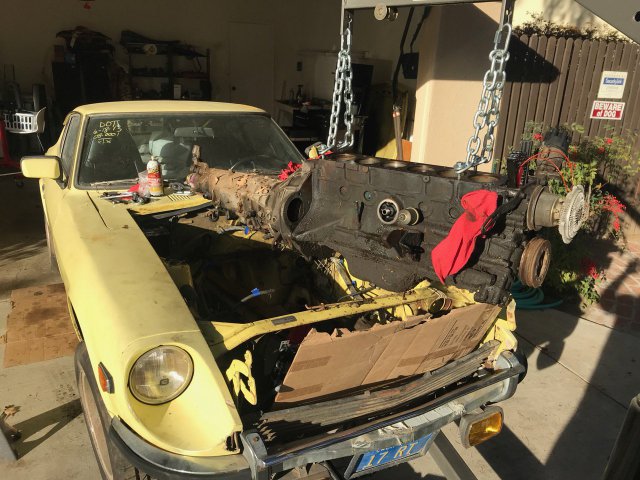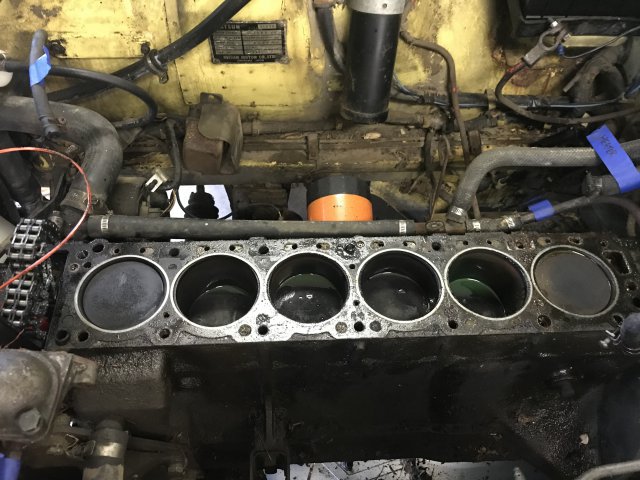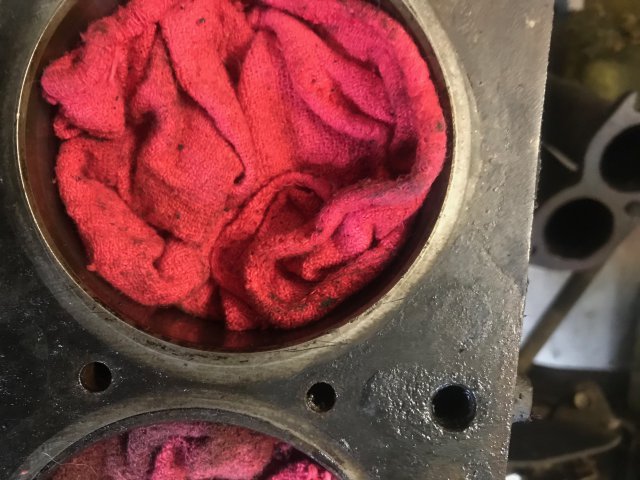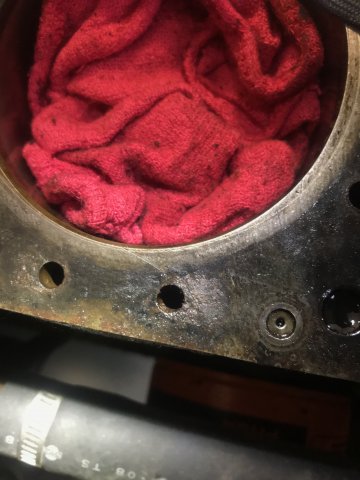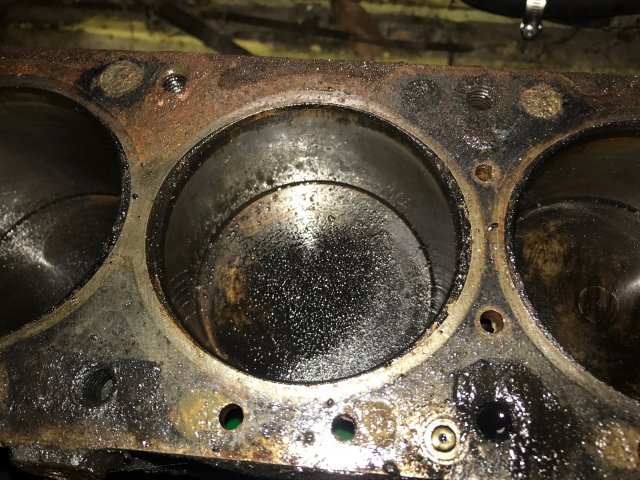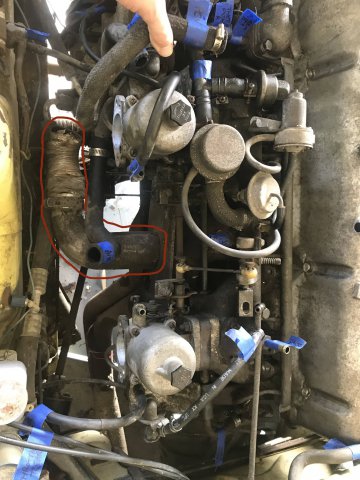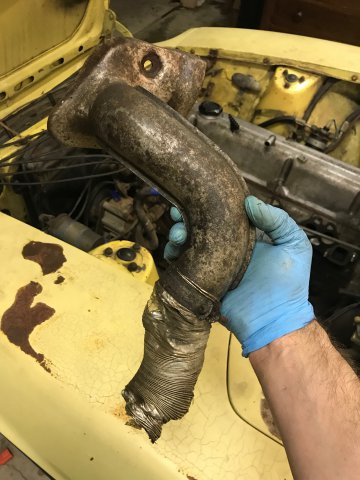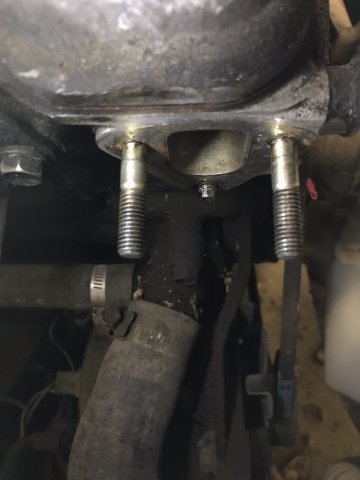
rand
Members-
Posts
23 -
Joined
-
Last visited
Content Type
Profiles
Forums
Blogs
Events
Gallery
Downloads
Store
Everything posted by rand
-
240Z Trouble bleeding rear brakes
rand replied to rand's topic in Brakes, Wheels, Suspension and Chassis
Great news! I rebuild the wheel cylinders and (partially) rebuilt the master this weekend, and things seem to be working. Unfortunately the master cylinder rebuild kit I got was only for the 70-72 Nabco and I have a Tokico. The only parts that seem to fit from the kit were the rubber rings that hold in the check valves. It seems like the issue was the wheel cylinders all along, but I ordered myself another master rebuild kit from classicgarage.com, so I'll see if that one works out at some point. My last question is do I need to do anything special to adjust the rear brakes once I have the drums on? I cranked the adjustment wheel out until I could barely get the drum on, but is there any further adjustment necessary? I read that they're "self-adjusting" but does that apply only to the handbrake? Here's some quick triumphant videos: Rear cylinder actuating Basic brake functionality confirmed -
240Z Trouble bleeding rear brakes
rand replied to rand's topic in Brakes, Wheels, Suspension and Chassis
Got it - I just ordered myself two wheel cylinder and one master cylinder rebuild kits. Hopefully I can rebuild them all this weekend with new seals, and I'll report back. Does anyone have a preferred how-to video for rebuilding? -
240Z Trouble bleeding rear brakes
rand replied to rand's topic in Brakes, Wheels, Suspension and Chassis
The pedal moves a significant amount when I press on it, even with the bleeders closed. I haven't observed any fluid leaking out since I reassembled everything. I totally disassembled the cylinders, and other than being filled with gummy fluid they were in good shape. I cleaned out the cylinders and was able to easily push the pistons in and out freely. -
I'm trying my hand at bleeding brakes for the first time on my '71 240Z that I got from my father-in-law and am having some trouble. After pulling a bunch of components* off and cleaning them out, I can finally get a good stream of fluid out of the bleeders with no bubbles using the old glass jar method. The problem is that when I close off the bleeders and press on the brake pedal the wheel cylinders don't budge at all. I would expect to be able to see them actuate at least a little bit even with no vacuum on the booster (the engine isn't installed yet). Is that a reasonable expectation? Anything else I can do to debug this? I'm really hoping the wheel cylinders aren't shot, as they're the early models and are crazy expensive these days. Is there any easy way to tell if these are the problem? * These are the components I've pulled off so far. I've blown compressed air through everything to make sure there are no blockages. "Pressure Regulating Valve" (#1 in the Haynes manual) - the seal had some gunk in it, but otherwise was in good shape The Y splitter next to the pressure regulating valve - pretty clean The soft lines going to the drums - one of these had a huge wad of gummed up fluid stuck in it that shot out like a rocket The hard lines connecting the soft lines to the cylinders - totally clean The wheel cylinders - these were filled with gummy brake fluid, but once I cleaned that out they seemed to be in good shape as far as I could tell. One of them was missing a spring, so I'll need to find a replacement. Thanks!
-
So it looks like the throwout/collar/fork from the 4-speed definitely won't work on the 5-speed. I'm going to buy a collar/fork for the 280 and see how they fit. I took a video to show what the 4-speed parts look like on the 5-speed here:
-
I'm in the process of rebuilding the L24 out of my 71 Series-1 240Z. I was planning on using the original Type-A 4-speed transmission, but recently found a close-ratio 5-speed and decided to get it. I stupidly bought a clutch for the 4-speed a year ago (this one), so now I'm wondering what parts I can still use and what I need to buy. Would someone out there mind taking a look at my parts list and give it a sanity check? Slave Cylinder: I'm assuming the old one isn't going to fit the new 5-speed, so I'm planning on buying this one Clutch Collar: Can I use the one out of the 4-speed, or should I buy a new one? Clutch Fork: The transmission didn't come with a clutch fork. The one from the 4-speed seems to fit, but I figure I should get the one that's meant to work with the collar and slave cylinder (this one). Clutch: I already bought this 240Z clutch, so it would be nice if I can still use it. I have the original flywheel that I'm planning on installing.
-
@ZHoob2004 Thanks, I think you're right. The Monroe book hasn't told me to find an accurate TDC with a degree wheel yet. I've only zero'd it out with a dial indicator before the head went on. I'm ordering a degree wheel and piston stop online now - I'll get it to TDC and report back.
-
I'm following the instructions in Tom Monroe's "How to Rebuild Your Nissan & Datsun OHC Engine" and I'm at the step where I need to install the oil pump and distributor drive shaft. In the book, he has a picture of the angle of the installed shaft relative to the distributor mounting face. I've tried pulling and reinserting the shaft for about 30 minutes (slightly rotating it this way and that each time) and can't figure out a way to get the angle any closer to what's pictured. I can either get it installed way more clockwise, or way more counterclockwise. How important is this exact angle? Tom's instructions: My best effort so far:
-
For anyone who ends up with the same problem, here's an update: I just talked to my machinist and he said that this is a common issue. Apparently bearing manufacturers sometimes oversize the thrust surfaces with the expectation that you will be resurfacing and removing material from your crank during the rebuild. This is usually indicated in the catalog, but apparently was not for my bearings. You can get them down to size by laying a piece of ~400 grit sandpaper on a piece of glass, spraying some WD-40 on and sanding down the front surface until you get the clearance you need.
-
I just read ahead in my Tom Monroe book, and he says: Looks like I'm just one of the rare unlucky ones. Has anyone out there successfully sanded down the thrust surfaces on their bearings? Any advice?
-
I'm re-assembling the L24 out of my Series 1 240Z and just tried dropping the crankshaft in. It dropped in with a tiny bit more encouragement than I expected, but that center bearing was so tight that I couldn't turn the crank once it was in. I pulled the crank back out to investigate, and that bearing came with it! It was on so tight that I had to lightly hammer it off with the butt of my mallet to get it back off. I assumed that the bearing would have just slipped onto the journal rather than needing to be forced like that. My crankshaft was ground down by 0.25mm, but I can't imagine why that would make the thrust surfaces tighter. I measured the center bearing width and it came out to 32.12mm, but I have no idea if that's nominal or not. I couldn't get a good read on the crank width at the center journal with my calipers. This is my first time building an engine, so any advice is appreciated. Is this kind of interference fit expected here, or should I send my crank back to the machine shop, or just order new bearings? Thanks! See pictures below. The box that my bearings came in. These were provided by my machine shop. Caliper reading on the width of bearing. Notice that the back of the bearing is now scuffed up. When I tried turning the crank one way, the bearing tab prevented it from rotating. When I tried to turn it the other way, the bearing just rotated with the crank and scuffed a little material off its back as it went.
-
I have a F4W71A transmission from my 71 240Z that is sitting on the floor of my garage while I rebuild the engine. The shifter has that loose "monkey motion" which I'd like to try to tighten up while it's out of the car. I'm thinking that if I can take off the shift lever, I can probably just squeeze it in a vice to take up the play between the prongs. If that doesn't work, I could try heating it and banging it on an anvil. Has anyone out there done this successfully? Removing the C-clip and pin from the bottom of the lever is easy, but how do I get the pin out of the upper pivot (see pic below)? It looks like a flathead screw, but trying to turn it with a screwdriver got me nowhere. Video of loose shifter:
-
Does anyone have any shops they recommend in the Los Angeles area? I'm looking to have someone rebuild the transmission from my 240.
-
I've pulled pretty much everything off of the block now and am getting ready to bring it to a machine shop to get checked out and cleaned up. I was looking at my timing cover, and the area underneath the water pump is pretty badly pitted and scarred looking. Am I going to need a new timing cover, or is it fine to just run the engine with this one? I don't mind replacing the water pump, but timing covers are pretty hard to find. I saw a few on eBay, but they were around $250 😐
-
Just wanted to follow up on my results on pulling the engine with the head off. I ended screwing some bolts in into the head-bolt holes with some chain and washers on them. It worked great and was pretty easy to do. Pictures attached.
-
Ok, I'm all in. I wanted to rebuild this engine anyway, so I may as well do it now. This is a project for me to learn and have fun with, and it's not like I need it to take me to work on Monday. Speaking of learning, all of the guides I've seen to pulling the engine have you attach the engine hoist to the cylinder head. Seeing as I've already removed the head, is there a recommended place on the block to attach to? I'd rather not put my newly rebuild head onto the scummy block just to pull it off again. Also, any thoughts on Tom Monroe's method of pulling the engine without the transmission? I've heard that one is pretty controversial.
-
Thanks @Lazeum - that's the way I'm leaning. My impatient side really wants drive this car asap, but I think I'll feel better if I clean everything up first. As long as I have this engine out I may as well strip and repaint the engine bay. As long as I'm doing that I may as well strip and repaint the rest of the body. As long as I'm doing that, I should probably clean up and repaint the frame. As long as I'm doing that.... oh no, here we go!
-
I just pulled the head off of my new (to me) L24 that hasn't run in ~10 years to get it rebuilt and resurfaced yesterday, and my engine looks like it's in worse shape than I was hoping. When I pulled the head off, there was coolant puddled in some of the cylinders. I was hoping to just get the head work done, pop it back on and be able to drive the car around for a few months. After cleaning up the deck surface a little bit, I've found that it's pretty scratched up and has a few nicks and dings around the top of the cylinder. I was planning on pulling the block apart at some point so I can get it hot tanked, but now I'm worried that I need to get the deck resurfaced before I can run the engine. Am I being too conservative here, or do I really need to pull this thing apart and get it re-machined? Coolant in cylinders right after pulling head off: Nicks and scratches on deck near cylinder: More scratches: State of cylinder before minor clean up:
-
What's this on my exhaust manifold? (1971 240Z)
rand replied to rand's topic in S30 Series - 240z, 260z, 280z
Aha, that makes perfect sense. Thanks David and Miles! A friend printed out a FSM (the one here) for me as a gift and that hot air intake diagram isn't in it. Miles - which FSM did you pull that image from? It looks like my flexible tube deteriorated long ago. I'll reinstall the intake and hunt around for a replacement tube at some point. -
What's this on my exhaust manifold? (1971 240Z)
rand posted a topic in S30 Series - 240z, 260z, 280z
I'm currently pulling the manifolds off of my 1971 240Z, and I can't figure out what this pipe is that's bolted onto my exhaust manifold. It looks totally vestigial because there is no opening for it on the manifold side, and the other side just dangles into the engine bay. What is this thing, and can I leave it off when I put everything back together? -
Yeah, I believe it. I'm a little scared to try welding for the first time a few mm from that machined surface though. Maybe I'm being too timid and should just give it a try, but I'm worried about splattering metal and having to pay to get the pump mount resurfaced. Great tip about agreeing on a price with a machine shop beforehand, any idea what a decent rate for something like this would be?
-
Ok, so just a quick update - so far nothing I've tried has had any success. Last weekend I tried JB-Welding a nut onto the stub after roughing it up a little with a file and cleaning it off with acetone. I used the two-part stuff instead of the SteelStick because it claims a higher strength. After letting that cure for two days I put a wrench to it, and it just broke off immediately. I then tried filing some flats onto the stub and turning it with an adjustable crescent wrench, but it just rounded off my flats. I also tried vise-grips and channel locks (even squeezing the hell out of my channel locks with another pair of channel locks) with no luck. That bolt is seriously stuck in there. I've been hosing it down with PB Blaster every morning before I head out to work, but I don't think it's making a difference. Finally, on the advice of a friend I bought a left-handed die and managed to get a few threads onto the stub last night. It's in pretty bad shape now after all of the abuse and I didn't want to take too much more material off, so I just did what I could and applied some red Loctite to a left-handed nut which is curing on there now. I'll try turning it tonight and see what happens, but given how stubborn it's been so far I have low expectations. At this point, I'm fine with just bringing in a professional to help me out. I did some searching online and came across this guy who does house calls, so I'll give him a call and see what he charges. I'm also fine just removing the whole head and bringing it out to a machine shop. Does anyone have a shop they recommend in the LA / Sherman Oaks / Van Nuys area?
-
So... A friend of mine loaned me one of these gadgets claiming he had gotten out plenty of stuck bolts with it. Well, all it managed to do was turn my bolt into a peg (see attached depressing photo). The nut still kind of threads onto it so I applied some J-B Weld 2-part KwikWeld to the inside of a nut and it's curing onto the peg now (with plenty of Saran Wrap between it and the block). I'm going to let it set overnight and see if I can get it out tomorrow. Thanks for all of the help everyone, I'll let you all know how it goes. @manimal : How did you know what size bolt it is? I checked the FSM as well as my Haynes manual, and none of them specify any of the bolt sizes. Do you have another book you pulled the info from, or did you just know it off-hand? I'd love to be able to look this kind of stuff up in the future.
-
I'm trying to get my new Series 1 240Z project car started, and it looks like the original fuel pump isn't working. I bought a replacement, but the bottom bolt snapped in half while I was removing the original. Now I have half of that bolt stuck in my block with no good way to pull it out. Does anyone out there have any good ideas? I've heard of people welding on nuts, but I've never welded in my life so I'm a little worried about trying it. Also, I'd like to get a replacement bolt for when I eventually pull that sucker out. Does anyone know what size bolt this is?
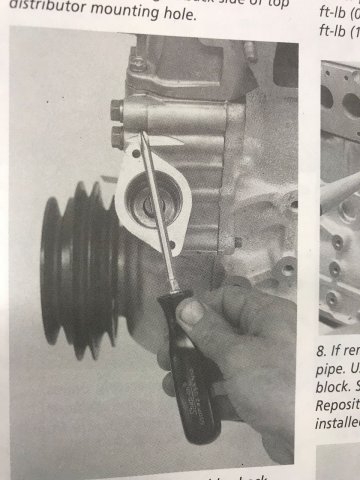
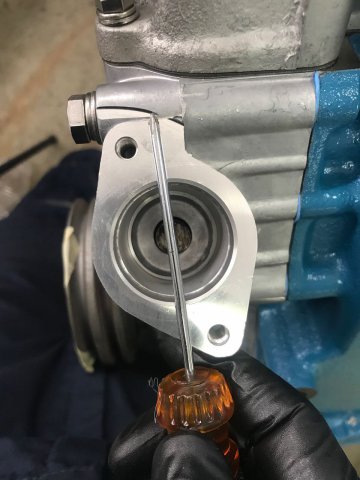
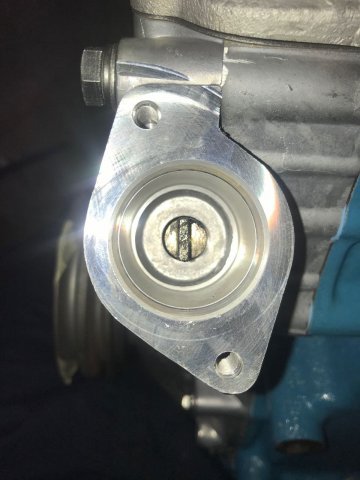

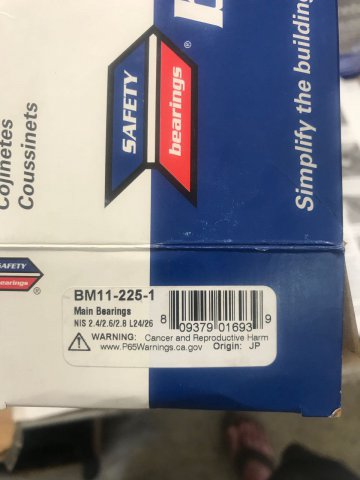
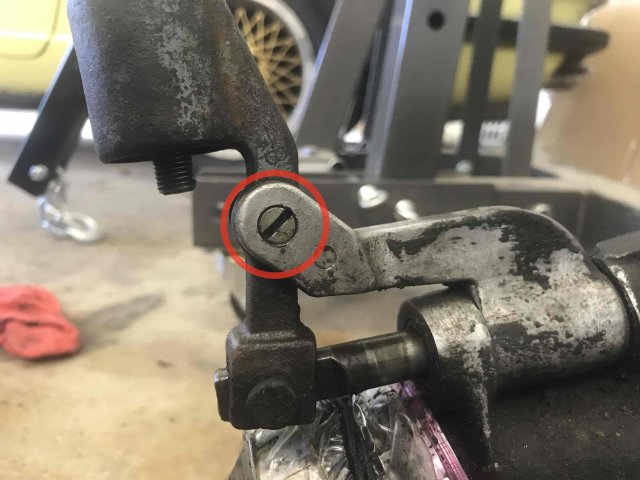

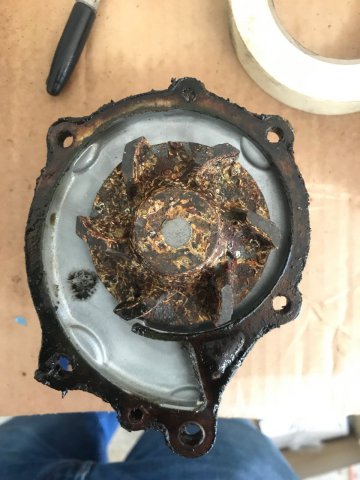

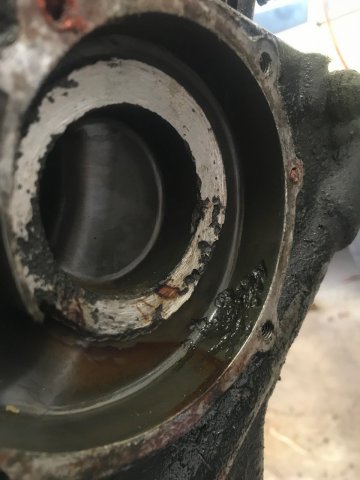
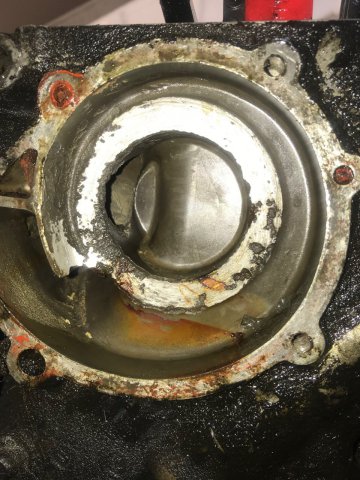
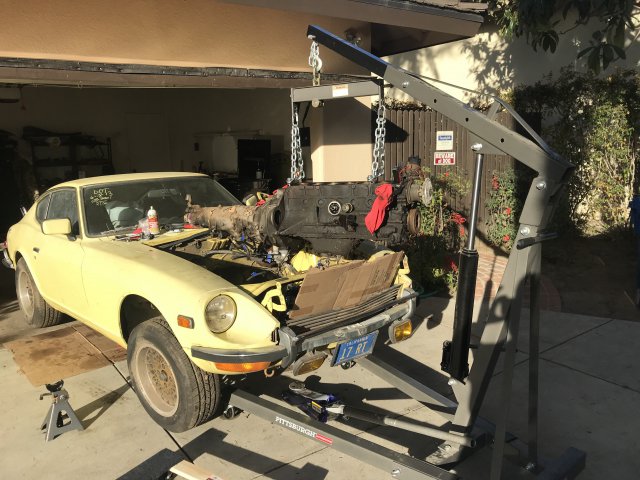

.thumb.jpg.de2e3c6b3eadd0ee5c9440b5f8d9f904.jpg)
